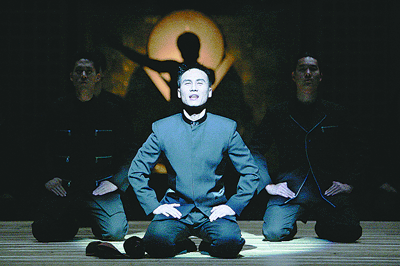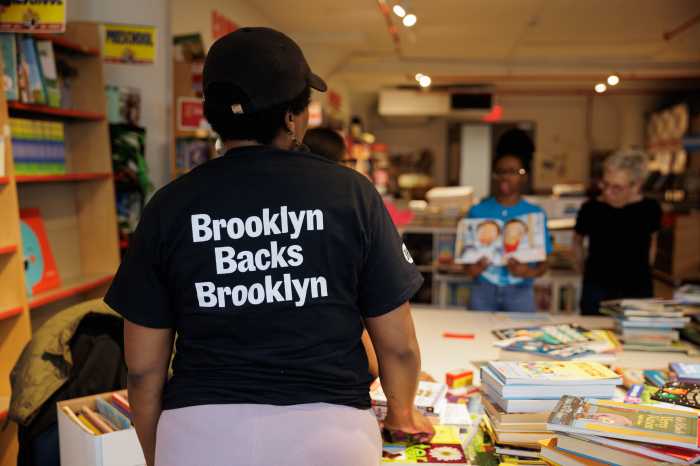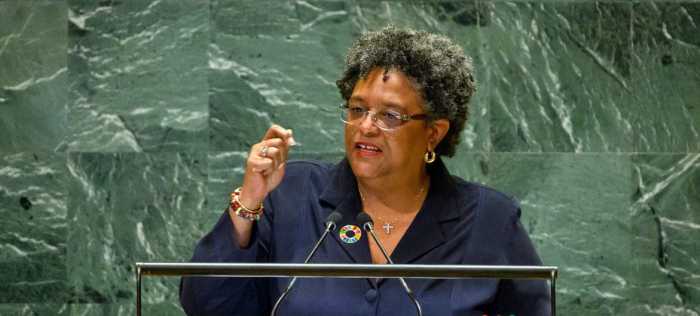‘Pacific Overtures,’ a complex tale, gets entangled by its own identity crisis
For Sondheim fans with only the 1976 original cast album, some photographs and reminiscences of those “who were there,” the first Broadway revival of “Pacific Overtures” is something that we scheduled our autumn outings around. After all, we’d waited nearly 30 years for this.
Musically, “Pacific Overtures” is one of Stephen Sondheim’s most sophisticated and thrilling scores, with sparkling lyrics, borrowing from Japan’s theatrical Noh tradition. As written, the story challenges convention, specifically focusing on the corruption created by Western imperialism imposed in the name of democratic virtues. It is a show about the loss of racial identity, the corrosive force of social upheaval and how unfettered power obliterates personal freedom and national pride. The contemporary political relevance of this show almost goes without saying.
That the Roundabout’s production is such a crushing disappointment is a tragedy indeed. For those who love the show, you’ll sit there waiting for something to move you, to touch you, leaping with all your heart at anything that approaches real feeling. For those who don’t know the show, you’ll wonder why there was so much excitement surrounding this revival.
What the production seems to lack is any strong directorial vision for the people involved. To be sure, the staging and choreography by Amon Miyamoto are often lyrical, and the costumes by Junko Koshino are stunning. For the most part, the company is highly accomplished and talented, and yet this interpretation never coheres into a moving portrayal. Design, for all its merits, cannot carry this show, and because Miyamoto never allows his characters to develop he is never able to convey the enormity of the cultural violation that America committed in Japan in less than a decade.
Part of this production’s weakness stems from the design of the American characters. Commodore Perry is a large body puppet, and wigs and masks represent the Americans, resulting in a dissonance between the abstract representation of these characters and the more literal representation of the Japanese. For all its visual appeal, the stylistic inconsistencies tend to alienate rather than engage the audience, resulting in a show that is visually appealing, expedient and lyrical when it needs to be, but ultimately distant and lacking heart.
Rather than conveying the eventual sense of humiliation visited upon them by the American defilement of their sacred soil, the Japanese appear to have capitulated even before the start of the first scene.
Therefore, the misguided notion that the Machiavellian removal of the Shogun will appease the intruders and force them to leave is never explicated. The Shogun’s mother allusion to the potential for poisoning—“If the Shogun is weak/Then the tea must be strong”—ought to elicit horror, but the moment simply passes. The song that ends the first act, “Someone in a Tree,” should at once be a celebration of individual pride at being a part of history and a chilling reminder of how history as written transmutes events to fit the sensibilities of those lucky enough to write it, but instead it falls flat. It’s all in the script and the score, but somehow Miyamoto never manages to find the show’s voice.
There are glimmers that the whole concept can work, as in Kayama’s number “Bowler Hat,” sung by Michael K. Lee in the strongest performance in the show, which is heart wrenching as he transforms himself from a samurai to an English gentleman, expressing a sense of loss even as he “keeps moving with the times.”
B.D. Wong stars as the Reciter and plays a variety of different roles including the narrator. Wong, a Tony Award-winner, is a charming and appealing actor, capable of powerful acting (“M. Butterfly”) and antic fun (“You’re A Good Man, Charlie Brown”). Yet at times he seems lost in the production, and that’s too bad. Many of the songs are set too low for his voice, and even assisted by microphones he and others in the cast are rendered unintelligible. It’s a shame to lose even one syllable of Sondheim’s lyrics.
The mostly Asian-American company, as mentioned, is very strong. Paolo Montalban is good as Manjiro, the sailor who has seen America and makes the opposite journey of Kayama—back to the tradition—but while he is a strong actor and solid singer, the direction obscures much of what drives him to, in effect, pull in and resist the invaders. Notable among the ensemble is Telly Leung who sings the Boy in “Someone in a Tree” and a sailor in “Pretty Lady.” His clear tenor is open and brilliant.
Roundabout is due credit for tackling a show that has proven problematic in the past. The reviews of the original were not great, and the show lasted 193 performances. The score remains one of Sondheim’s best and it only improves on hearing. Yet following last year’s resurrection of a breathtaking “Assassins,” it’s tough to be let down from high hopes.
Of course, I acknowledge that I may be asking too much of this show. Have memory and a burning desire to see this show revived created unrealistic expectations that no production could ever meet?
Not really. Shakespeare can still thrill, though one knows the pays almost by heart, and I certainly wasn’t around for the original productions. “Pacific Overtures” is a bold and daring piece of work, and it deserves a production that is willing to dip behind the screens and the fans and explore the darkness underneath the beauty.



































